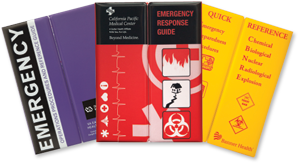Written by: Jim McKay
The Conneaut, Ohio, Police Department and local partners planned for months for the big active shooter drill that was to take place at Conneaut High School.
They wanted to focus on process, specifically unified command and interoperability between the various public safety agencies and the school to practice a unified response, especially after the botched response to the school shooting at Robb Elementary in Uvalde, Texas, in May 2022.
For this drill, and in light of what took place at Uvalde, officials wanted to not just focus on going in and eliminating the threat but the process that led to that eventuality — interoperability between police, fire, EMS, the school district, etc.
Even with more than five months to plan and with interoperability as a measuring stick, as well as trying to make the scenario as realistic as possible, the drill showed how ingrained in police departments nationally, save the very large ones, is the inability to communicate with other agencies and entities.
“It was just amazing that even though we planned to mitigate the problems of Uvalde, we couldn’t get any unified communications between any of the departments or between the fire and police or the school district and police, even though we had the communications plans in place,” said Conneaut Det. Taylor Cleveland.
A lot of planning went into the drill, including a tabletop exercise two months prior to the live event to get agencies on the same page and to affirm the goals of interoperability. Even so, a lot of those plans evaporated when the drill started.
“We had a lot of stuff that happened that we planned for that surprised us,” Cleveland said. “Even with the tabletop and some policy work to make sure we had a unified command between police and fire and EMS, and despite all that planning, it ended up not happening in real life, even though they knew that was the purpose of the exercise: to test unified command and command-and-control.”
Another surprise was that virtually all of the firsthand accounts of what happened, the eyewitness accounts by teachers and other administrators when they called in to 911, were wrong.
“We were really surprised with the amount of misinformation that was directed to police, fire and EMS from teachers calling 911 and misidentifying shooters,” Cleveland said. “That misinformation was constantly screaming on the radio. There was nothing that was correct that was being updated over the police and fire radios.”
“I heard guy and girl team, I heard five shooters, I heard somebody call in shots fired when it was dead silent,” school resource officer Tim Rose told the Star Beacon, the Ashtabula, Ohio, newspaper. “These poor people [police] were running around, I know you couldn’t see them, they were running through your school trying to figure out all the information, and I thank you greatly, because that’s realistic.”
One of the problems was that some of the agencies were on different radios. They had all been given access to the same radios, but when the virtual bullets began to fly, they did what they do in a real incident — they reverted to what they knew and grabbed the radio they always used.
Part of the problem is that police agencies, save the really big ones, don’t train on unified command. In fact, they encourage their officers to freelance, to be independent, be able to work on their own or with a partner.
“Our fire department gets maybe 10 structure fires a year, so they get 10 opportunities to practice that and probably 35 false alarms to do a dry run,” Cleveland said. “In the police departments we never practice it, and even if we did two or three times a year, we’d only use it on these big incidents.”
So, what can be done to fix it?
“It’s in our culture,” Cleveland said. “I’m not sure how to fix that.”
This article appeared on Emergency Management News and is shared with consent: https://www.govtech.com/em/safety/active-shooter-drill-shows-the-difficulties-of-response







